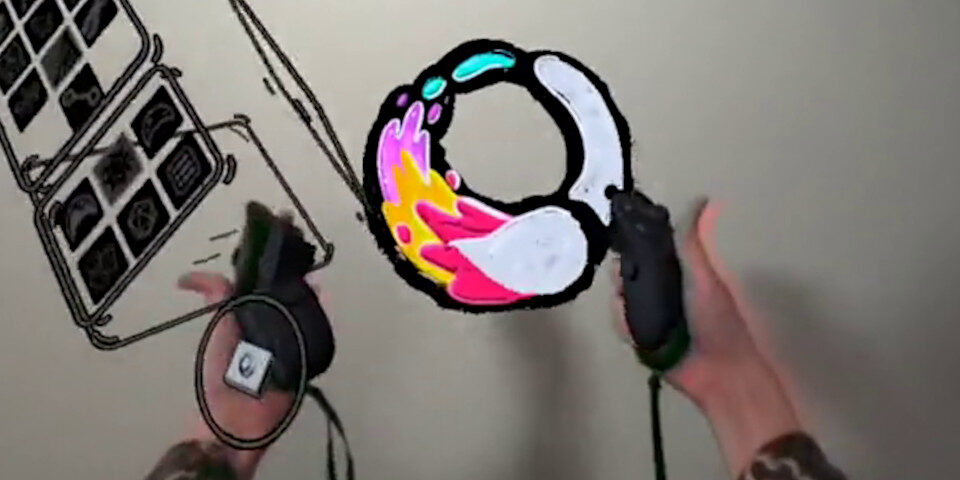Download open-source VR sketching tool Open Brush 2.0
Icosa Gallery has released Open Brush 2.0, a major update to the open-source VR sketching app.
The update adds support for layers and pressure sensitivity, improves frame rates by up to 10x, and adds support for OpenXR extensions, including one enabling Meta Quest users to paint in mixed reality.
A community-run open-source successor to Google’s Tilt Brush
Open Brush is based on Tilt Brush, the room-scale 3D painting and sketching tool previously developed by Google, and open-sourced in 2021 following its decision to stop developing it as a commercial product.
Like its predecessor, Open Brush enables artists to paint coloured strokes in virtual reality that function both as paint strokes and 3D geometry.
Users can control the form of each stroke by curving or lathing it, and it is possible to constrain strokes to straight lines or use grid or angle snapping to sketch geometric as well as organic objects.
Once created, strokes can be mirrored, recoloured or erased, and users can set up lights, cameras and a background environment for the resulting 3D sketch.
Completed sketches can be published to the Icosa Gallery itself, or exported in glTF, FBX, USD or JSON format, making it possible to use them as concept designs that can be refined in apps like Blender or Maya.
Sketches can also be used directly as VR assets in game engines: Open Brush has a dedicated Unity SDK.
As well as painting in virtual reality, users can run the software in monoscopic mode on Windows or Mac. It’s described as “clunky in places”, but is currently the only way to use Open Brush on macOS.

Support for Unity’s XR framework brings new features and better performance
Under the hood, the biggest change in Open Brush 2.0 is that the software has been updated to the latest version of Unity, and uses its XR plugin framework to support VR and mixed reality hardware.
That should enable Open Brush to support a wider range of hardware: ports for Pico devices and the upcoming Vive XR Elite are currently in development.
The software also now supports OpenXR extensions, one of which enables artists with Meta Quest headsets to use Pass-through mode to paint in mixed reality mode, as shown in the image above.
The update should also improve interactive performance, particularly on dense sketches: according to the release notes, “highly complex sketches that previously ran at 5fps are now hitting 50!”
New layer system and support for pressure sensitivity on brush strokes
New artist features in Tilt Brush 2.0 include a layers system, which currently supports up to eight layers.
Although a much smaller layer stack than desktop sketching apps, it should make it much easier to work with large sketches, and makes it possible to keep reference material separate from the working sketch.
Hidden layers are not included when exporting files.
In addition, the update introduces pressure sensitivity on “a number of brushes”, with the thickness of the stroke increasing according to how hard the user is squeezing the trigger on their VR controller.
Again, while VR controllers don’t support the same degree of pressure sensitivity as graphics tablets, the change should help Open Brush feel and behave more like a desktop sketching application.
In addition, there are two new tools, Snip and Join, for cutting existing strokes in half via their control points, or joinging two existing strokes.
Other features: new camera control panel, more import formats
Other changes include a new camera control panel, making it possible to adjust camera settings from within Open Brush, rather than having to edit the config file before a work session.
It includes controls for FOV, video smoothing on desktop, and for applying post-process effects.
In addition, Open Brush can now import point clouds in PLY format and video in WEBM format.
Licensing and system requirements
Open Brush 2.0 is available free on Windows, Linux and macOS. To use it in VR mode, you will need compatible headset, which includes the HTC Vive, Meta and Windows Mixed Reality headsets.
The source code is available under an Apache 2.0 licence.
Read a full list of new features in Open Brush 2.0 in the online documentation
Download compiled builds of Open Brush
Download the source code for Open Brush from Icosa Gallery’s GitHub repository
